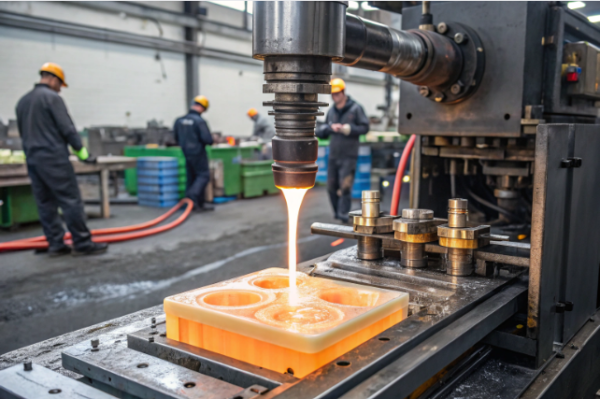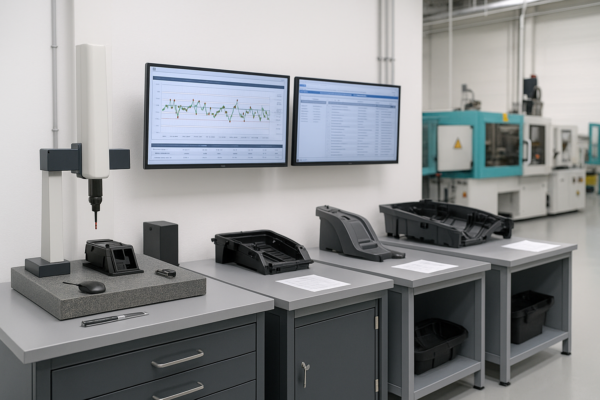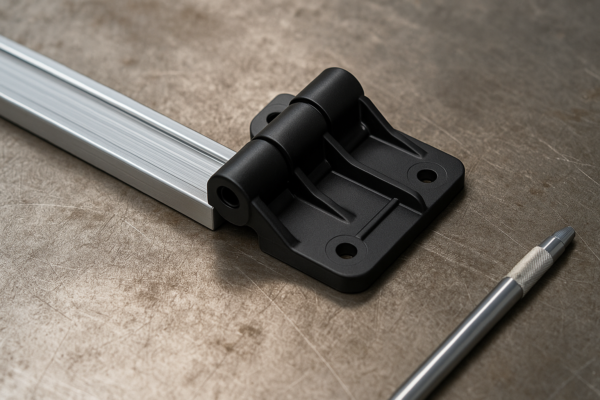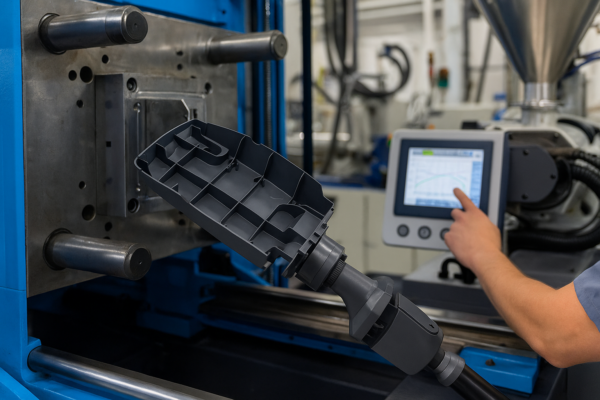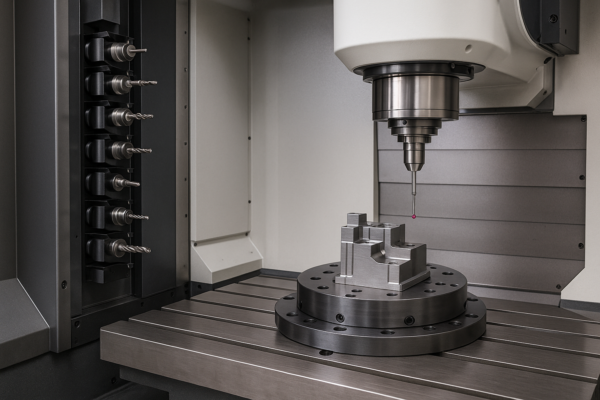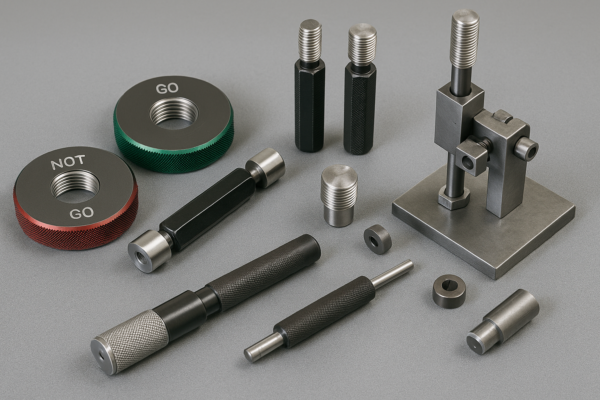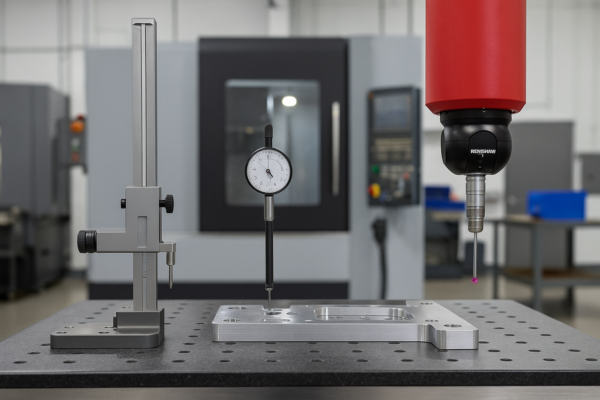What is the easiest plastic to injection mold?
Injection molding is a widely used manufacturing process for producing plastic parts. Many designers and engineers want to know which plastic material1 is easiest to work with in this process. The answer could save you time, money, and headaches in your production cycles.
Polypropylene (PP)1 is generally considered the easiest plastic to injection mold due to its excellent flow characteristics2, low viscosity, and high resistance to cracking during ejection. This semi-crystalline thermoplastic processes at relatively low temperatures (200-300°C) and offers good dimensional stability with minimal warping. Its natural lubricity helps parts release easily from molds, reducing cycle times and improving production efficiency. PP also tolerates a wide range of processing conditions, making it forgiving for less-than-perfect machine setups.
polypropylene injection molding granules
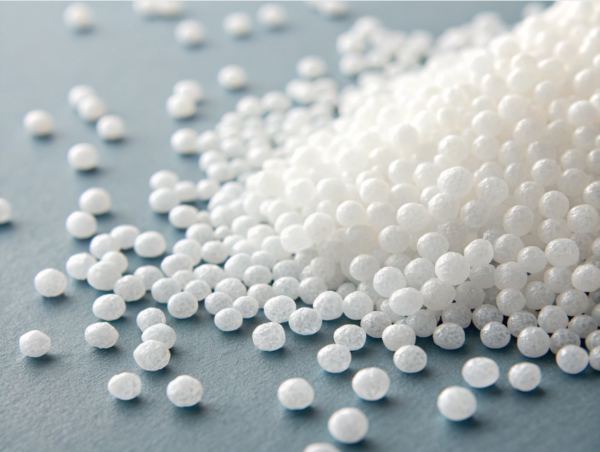
When selecting materials for injection molding projects, ease of processing1 is just one factor to consider. The ideal plastic should balance manufacturability with your final product requirements2. Some materials may be slightly harder to mold but offer crucial properties your application demands.
Which plastic is best for injection molding?
Choosing the best plastic for injection molding1 depends completely on your project requirements. While some materials mold more easily, others offer superior strength, heat resistance, or chemical compatibility.
Acrylonitrile Butadiene Styrene (ABS)1 is one of the best all-around choices for injection molding because it combines good processability with excellent mechanical properties2. This amorphous thermoplastic flows well in the mold, offers high impact resistance, and can be easily painted or glued after molding. ABS achieves nice surface finishes and maintains dimensional stability across temperature fluctuations common in many applications. Many consumer products use ABS.
ABS plastic injection molded parts
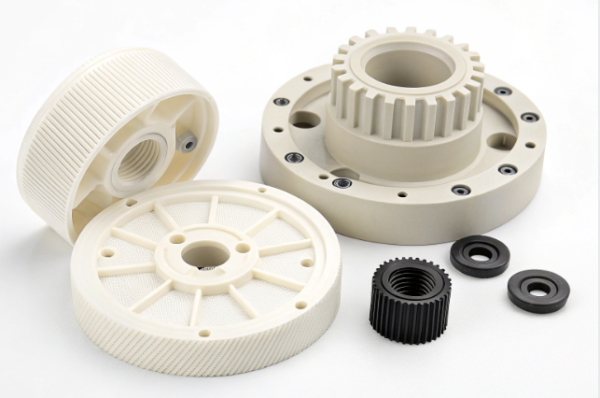
Comparing common injection molding plastics
| Plastic Type1 | Melt Temp (°C) | Advantages | Disadvantages |
|---|---|---|---|
| Polypropylene2 | 200-300 | Easy flow, chemical resistant | Poor UV resistance |
| ABS3 | 210-270 | Good impact strength, paintable | Poor weathering resistance |
| Polyethylene | 130-300 | Chemical resistant, flexible | Low stiffness |
| Polystyrene | 180-280 | Clear options available, stiff | Brittle, poor impact |
For parts requiring extreme durability, polycarbonate offers outstanding impact strength but requires higher processing temperatures. Medical applications often use polyetheretherketone (PEEK)4 for its sterilizability and biocompatibility, though its high melting point makes molding more challenging.
What plastic is easy to mold?
Beyond polypropylene, several other plastics offer excellent moldability1 for different applications. The ease of molding typically relates to the material’s viscosity2, melting temperature, and shrinkage characteristics.
Low-density polyethylene (LDPE)1 is exceptionally easy to mold due to its low melting point (115-135°C) and flexible molecular structure. This material flows smoothly into detailed mold cavities with minimal pressure requirements. LDPE naturally2 resists sticking to molds and withstands repeated flexing without cracking. Food packaging and disposable containers often use LDPE.
Factors making plastics easy to mold
- Low melt viscosity1: Allows material to flow easily into mold details
- Wide processing window: Forgives temperature and pressure variations
- Low shrinkage: Maintains dimensional accuracy after cooling
- Good release properties: Parts eject cleanly without sticking
- Fast cycle times2: Crystallizes or solidifies quickly in the mold
Polystyrene (PS)1 also molds easily and comes in crystal clear formulations for see-through applications. While less impact-resistant than some alternatives, PS flows exceptionally well into thin sections and complex geometries. The material’s rigidity2 helps maintain sharp details in the final product.
What is the cheapest plastic to injection mold?
Cost considerations often dictate material choices in high-volume production. The cheapest plastics to injection mold1 typically combine low material costs with fast cycle times2 and minimal processing requirements.
High-density polyethylene (HDPE)1 ranks among the most economical choices, offering good stiffness at a low price point. This versatile material processes easily between 180-280°C and resists many chemicals. HDPE’s high strength-to-density ratio2 makes it practical for everything from bottle caps to industrial containers. Recycling programs widely accept HDPE, contributing to its cost-effectiveness.
HDPE plastic pellets for molding
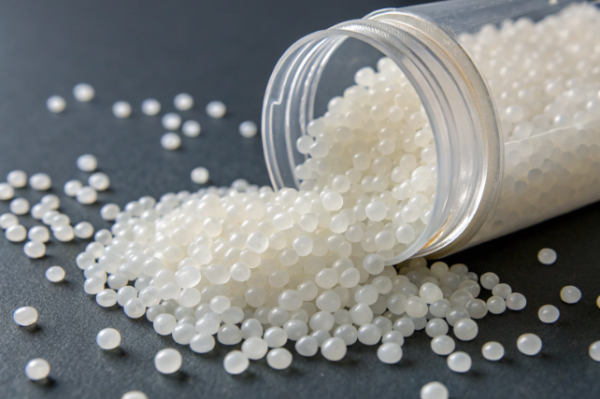
Cost factors in plastic injection molding
- Material price per kilogram1
- Cycle time efficiency2
- Scrap rate percentage
- Mold maintenance requirements
- Energy consumption during processing
Polypropylene also remains cost-effective1 due to its lightweight nature and excellent recyclability2. When considering total project cost, remember that easier-to-mold materials often save money through higher production yields and lower defect rates, even if their raw material price appears slightly higher initially.
Conclusion
Selecting the right plastic for injection molding involves balancing ease of processing, material properties, and cost considerations. Polypropylene1 stands out as the easiest material to mold with its excellent flow characteristics and forgiving processing window. For budget-conscious projects, HDPE and LDPE2 offer economical solutions, while ABS provides a strong combination of moldability and performance. Always match your material choice to your product’s functional requirements, environmental conditions, and aesthetic needs for optimal results in your injection molding projects.
-
Explore the benefits of Polypropylene for injection molding to understand its superior flow characteristics and processing ease. ↩ ↩ ↩ ↩ ↩ ↩ ↩ ↩ ↩ ↩ ↩ ↩ ↩ ↩ ↩
-
Learn about the cost-effectiveness and properties of HDPE and LDPE to make informed decisions for budget-conscious projects. ↩ ↩ ↩ ↩ ↩ ↩ ↩ ↩ ↩ ↩ ↩ ↩ ↩
-
Explore this link to understand ABS plastic’s unique properties and its diverse applications in various industries. ↩
-
Learn about PEEK’s unique properties that make it ideal for medical applications, including sterilizability and biocompatibility. ↩

